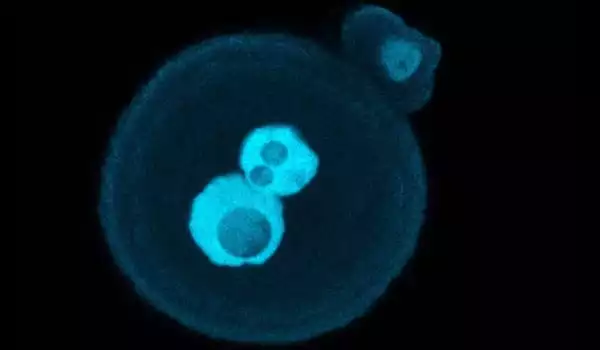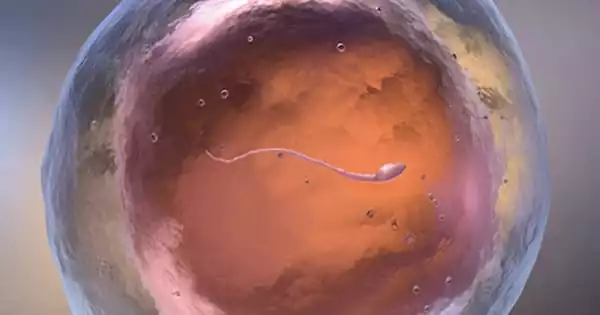Hereditary disorders, as well as malignancies and cardiovascular diseases, may be linked to a condition known as genomic imprinting, in which only the maternally or paternally inherited gene is active. An international research team led by scientists from the Technical University of Munich (TUM), the Max Planck Institute for Molecular Genetics (MPIMG) in Berlin, and Harvard University in Cambridge (USA) has now explored the mechanisms underlying gene deactivation.
Our cells have the complete genetic information from both our mothers and fathers. We inherit 23 chromosomes, which carry our DNA, from each of them. As a result, we have two copies of each gene in our genome, and both are usually active. This has the advantage that faulty mutations inherited from the mother or father are often balanced out by the other copy of the gene.
However, for approximately 1% of our genes, only the gene inherited from the father or mother is active, while the other is deactivated, a phenomenon known as genomic imprinting.
Approach for treating diseases
“Many genetic and epigenetic illnesses, like as Beckwith-Wiedemann syndrome, Angelman syndrome, and Prader-Willi syndrome, are connected with genomic imprinting,” explains Dr. Daniel Andergassen, chairman of the Independent Junior Research Group at TUM’s Institute of Pharmacology and Toxicology. “It would hypothetically be feasible to compensate for issues produced by the active, malfunctioning gene if the healthy, inactive gene could be reactivated.”
“However, before we can design future treatments, we need to understand the principles,” adds MPIMG director Prof. Alexander Meissner. “In recent years, it has become obvious that genomic imprinting is mediated by numerous molecular processes.”
Many genetic and epigenetic illnesses, like as Beckwith-Wiedemann syndrome, Angelman syndrome, and Prader-Willi syndrome, are connected with genomic imprinting. It would hypothetically be feasible to compensate for issues produced by the active, malfunctioning gene if the healthy, inactive gene could be reactivated.
Dr. Daniel Andergassen
Read lock for the gene
In genomic imprinting, either the genetic material’s “packaging” or the DNA itself is chemically changed. Instead of changing the genetic code, the alterations prevent the gene from being read.
“These are known as epigenetic mechanisms,” Andergassen explains. “DNA can be thought of as the hardware, and epigenetics as the software that regulates the genes.” Genetic control occurs in every cell in the organism. All cells carry the same genetic information, however various genes are active depending on the organ.
Genetic scissors remove the “off switch”
Meissner and Andergassen, who were still conducting research at Harvard University (USA) at the time of the study, along with Dr. Zachary Smith, utilized mice to determine whether epigenetic pathways were responsible for imprinting.
They employed the CRISPR-Cas9 molecular biology technology, which acts as a “genetic scissors,” deleting and inserting DNA segments. The researchers turned off known epigenetic “off switches” and watched to see if the silenced gene reactivated. They were able to correlate the most critical epigenetic “off switches” with imprinted genes using this method.

Hydrocarbon molecules render genes inactive
The majority of the genes are inactivated by DNA methylation, which attaches hydrocarbon molecules to the genetic material. A different set of enzymes known as Polycombs silences a different set of genes. An second mechanism is at work in the placenta: some genes are deactivated in this tissue by chemically altering the proteins that serve as a structural scaffold for the DNA.
The small but crucial difference
In addition to genomic imprinting, which turns off particular genes, the researchers looked into another phenomenon. One chromosome is completely inactive relatively early in embryonic development in female cells, which, unlike male cells, have two X chromosomes. This holds true for nearly all mammals, including humans.
“We observed that the enzyme PRC2 plays a crucial role in X chromosome inactivation, at least in the placenta,” adds Andergassen. “Once this enzyme is removed, the quiet X chromosome is revived.”
The findings could have implications for X-chromosome-related diseases since reactivation of the quiet gene could compensate for the faulty active gene. Andergassen will investigate whether heart disease is linked to epigenetics, particularly the inactive X chromosome in women, in a follow-up investigation at TUM. “Because our epigenetics alter as we age, it is possible that the X chromosome becomes active again and that the duplicate genetic activity has a negative affect,” the researcher explains.
The team’s findings provided an overview of the epigenetic mechanisms that preserve genomic imprinting. “With the three known epigenetic pathways, we can explain practically all parent-specific gene expression,” adds Andergassen. “However, little is known about expression in the placenta and whether it is shared by all animals. More research will be needed to determine how these mechanisms affect the development of the fetus.”





